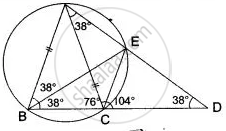Advertisements
Advertisements
प्रश्न
In the given figure, ∠BAD = 65°, ∠ABD = 70°, ∠BDC = 45°
- Prove that AC is a diameter of the circle.
- Find ∠ACB.

उत्तर
i. In ΔABD,
∠DAB + ∠ABD + ∠ADB = 180°
`=>` 65° + 70° + ∠ADB = 180°
`=>` 135° + ∠ADB = 180°
`=>` ∠ADB = 180° – 135° = 45°
Now, ∠ADC = ∠ADB + ∠BDC
= 45° + 45°
= 90°
Since ∠ADC is the angle of semicircle, so AC is a diameter of the circle.
ii. ∠ACB = ∠ADB ...(Angles in the same segment of a circle)
`=>` ∠ACB = 45°
APPEARS IN
संबंधित प्रश्न
AB is a diameter of the circle APBR as shown in the figure. APQ and RBQ are straight lines. Find : ∠PRB
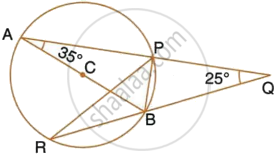
In the given figure, ∠BAD = 65°, ∠ABD = 70° and ∠BDC = 45°. Find:
- ∠BCD
- ∠ACB
Hence, show that AC is a diameter.
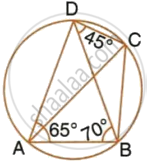
In a cyclic-trapezium, the non-parallel sides are equal and the diagonals are also equal. Prove it.
In the given circle with diameter AB, find the value of x.
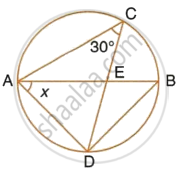
In cyclic quadrilateral ABCD; AD = BC, ∠BAC = 30° and ∠CBD = 70°; find:
- ∠BCD
- ∠BCA
- ∠ABC
- ∠ADC
In the given figure, ∠ACE = 43° and ∠CAF = 62°; find the values of a, b and c.

AB is a diameter of the circle APBR as shown in the figure. APQ and RBQ are straight lines. Find : ∠PBR
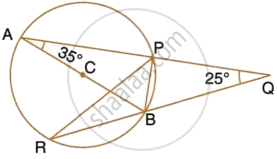
AB is a diameter of the circle APBR, as shown in the figure. APQ and RBQ are straight lines. Find : ∠BPR
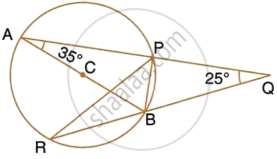
In the following figure, O is the centre of the circle, ∠ PBA = 42°.
Calculate:
(i) ∠ APB
(ii) ∠PQB
(iii) ∠ AQB
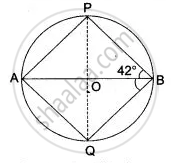
In the figure, AB = AC = CD, ∠ADC = 38°. Calculate: (i) ∠ ABC, (ii) ∠ BEC.
